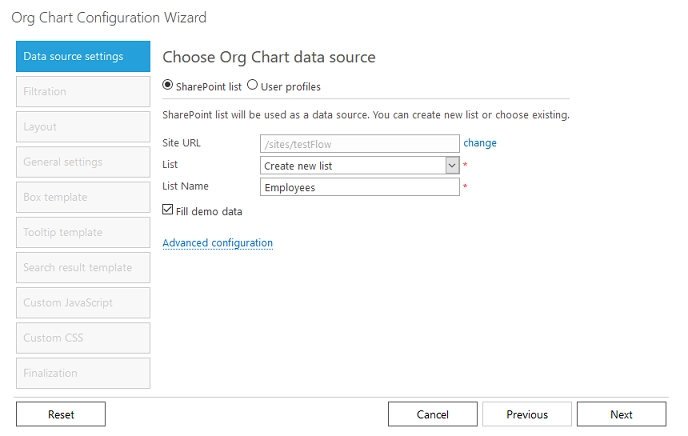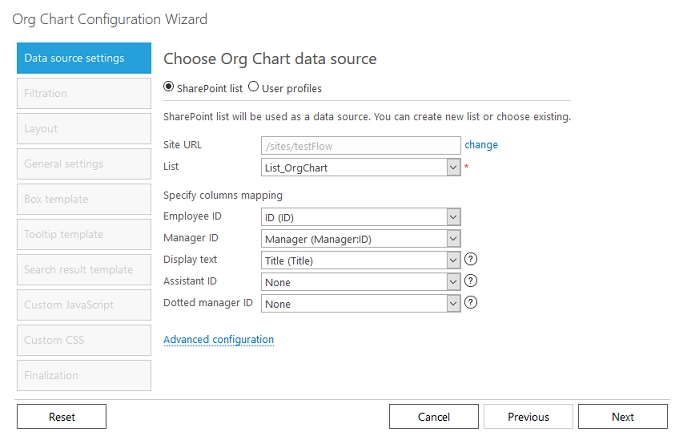Quick configuration (version 3.x.x and on-premises)
Note
The instruction below is for Modern SharePoint pages. If you use Classic SharePoint pages check this instruction.
Once you added the web part to your page, you can see the message asking you to configure the web part.
Open your page in edit mode. Then Click pencil icon at the left side of your web part. It will open property pane:
Then click Open config wizard in the property pane.
Majority of the options in the configuration wizard is filled with default values, you have to configure data source only (first step), then go through the wizard and click Finish button.
You can choose between two data sources:
SharePoint list.
User profiles.
If you choose User profiles as a data source, no additional configuration is needed, just go through the wizard until the end.
If you choose SharePoint list as a data source, it will be configured to create a new list with demo data by default. You only need to fill List name.

If you want to use an existing SharePoint list, you can choose it from combo box. Then you will have to specify mapping for list fields required for building correct hierarchy. The interface for mapping looks like this.

Mapping defines the connection between Organization Chart field and List field. Data from the corresponding list field will be used by the Organization Chart, for example, you can specify the mapping between Employee ID and list item ID.
Employee ID, Manager ID and Display text mappings are required, you can leave other mappings empty. Once you configured it, you can go through the wizard and click the finish button.
Employee ID and Manager ID are used to build hierarchy. Display text is used as display text for entities in the org chart. For example, you will see Display text in the breadcrumb.
You can change these settings later too as you want, but these settings are available for Full Control users only.
Read Advanced Web Part configuration for more information.